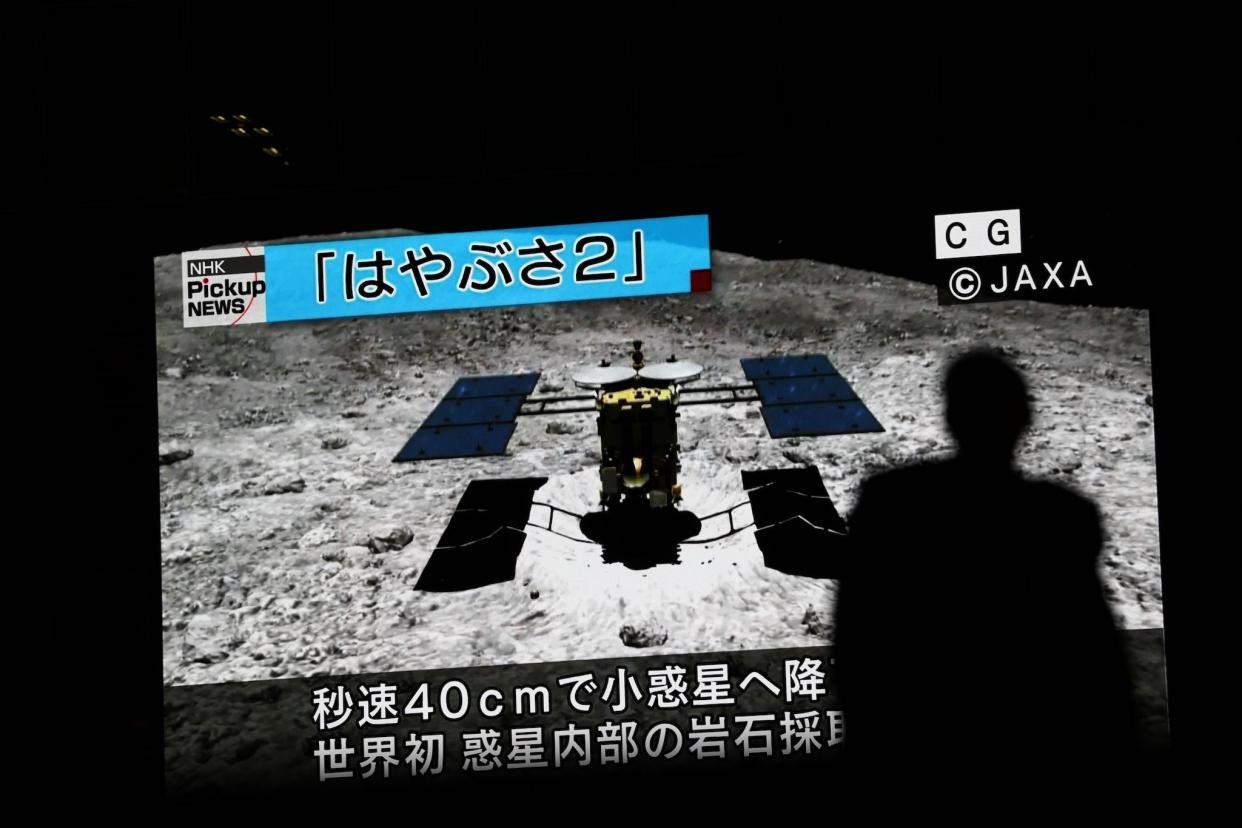Hayabusa2: Japanese spacecraft returns to Earth carrying pieces of distant asteroid

Samples taken by Japan’s Hayabusa2 spacecraft of a distant asteroid have arrived back on Earth, the country’s space agency has said.
It is the first time that a spacecraft has carried subsurface samples of an asteroid back to Earth, and brings an end to a pioneering, six-year round trip. Scientists hope that the pieces of the asteroid Ryugu can help us learn about the origins of our solar system and of life itself.
The capsule carrying the sample is only 38 cm across, and was recovered by a helicopter search team in a remote part of southern Australia on Sunday. On touchdown the asteroid would have travelled 180 million miles, a journey that took over a year.
As it got nearer to Earth, with about 135,000 miles left to go, the small capsule detached from the larger spacecraft. Hayabusa2 then moved away from Earth, and onto another asteroid, as it took pictures of the capsule’s journey back to Earth.
The capsule then descended through the atmosphere, protected by a heat shield. As it neared Earth it opened up a parachute and began broadcasting the location.
Scientists will examine the composition of those samples, particularly the organic materials that are found there. Because they are taken from beneath the surface, they could offer a look at pieces of an asteroid that have not been contaminated by radiation or the other conditions of space.
Pictures taken using telescopes on Earth showed Hayabusa2 and the capsule itself, both relatively easily visible in the sky, as the landing neared.
【速報その2】国立天文台三鷹キャンパスの50センチ公開望遠鏡でも、何とか、何とかはやぶさ2のカプセルが写りました。処理前のもので、画像が荒くてお見苦しい点もあると思いますが、ご容赦ください(2020年21時10分頃撮影。画像は、南が上になっています)。 pic.twitter.com/Au72bHPbfr
— 国立天文台観望会 (@naoj_kanboukai) December 5, 2020
The first Hayabusa craft brought back small pieces of another asteroid known as 25143 Itokawa in 2010. Those have already helped provide information on the evolution of our solar system.
The arrival of the new pieces of asteroid comes at a busy time for so-called sample return missions. Nasa is running its own similar mission – known as Osiris-Rex - it collected pieces of the asteroid Bennu in October and will bring them back in 2023 – and it came at the end of a week that saw China land on the Moon and collect pieces of the lunar surface.
The Japan Aerospace Exploration Agency (Jaxa) hopes to find clues to how the materials are distributed in the solar system and are related to life on Earth. Yoshikawa, the mission manager, said 0.1 gram of the dust would be enough to carry out all planned researches.
So far, its mission has been fully successful. It touched down twice on Ryugu despite the asteroid's extremely rocky surface, and successfully collected data and samples during the years it spent near Ryugu after arriving there in June 2018.
In its first touchdown in February 2019, it collected surface dust samples. In a more challenging mission in July that year, it collected underground samples from the asteroid for the first time in space history after landing in a crater that it created earlier by blasting the asteroid's surface.
Asteroids, which orbit the sun but are much smaller than planets, are among the oldest objects in the solar system and therefore may help explain how Earth evolved.
Ryugu in Japanese means "Dragon Palace", the name of a sea-bottom castle in a Japanese folk tale.
Additional reporting by Associated Press
Read More

 Yahoo Movies
Yahoo Movies 
